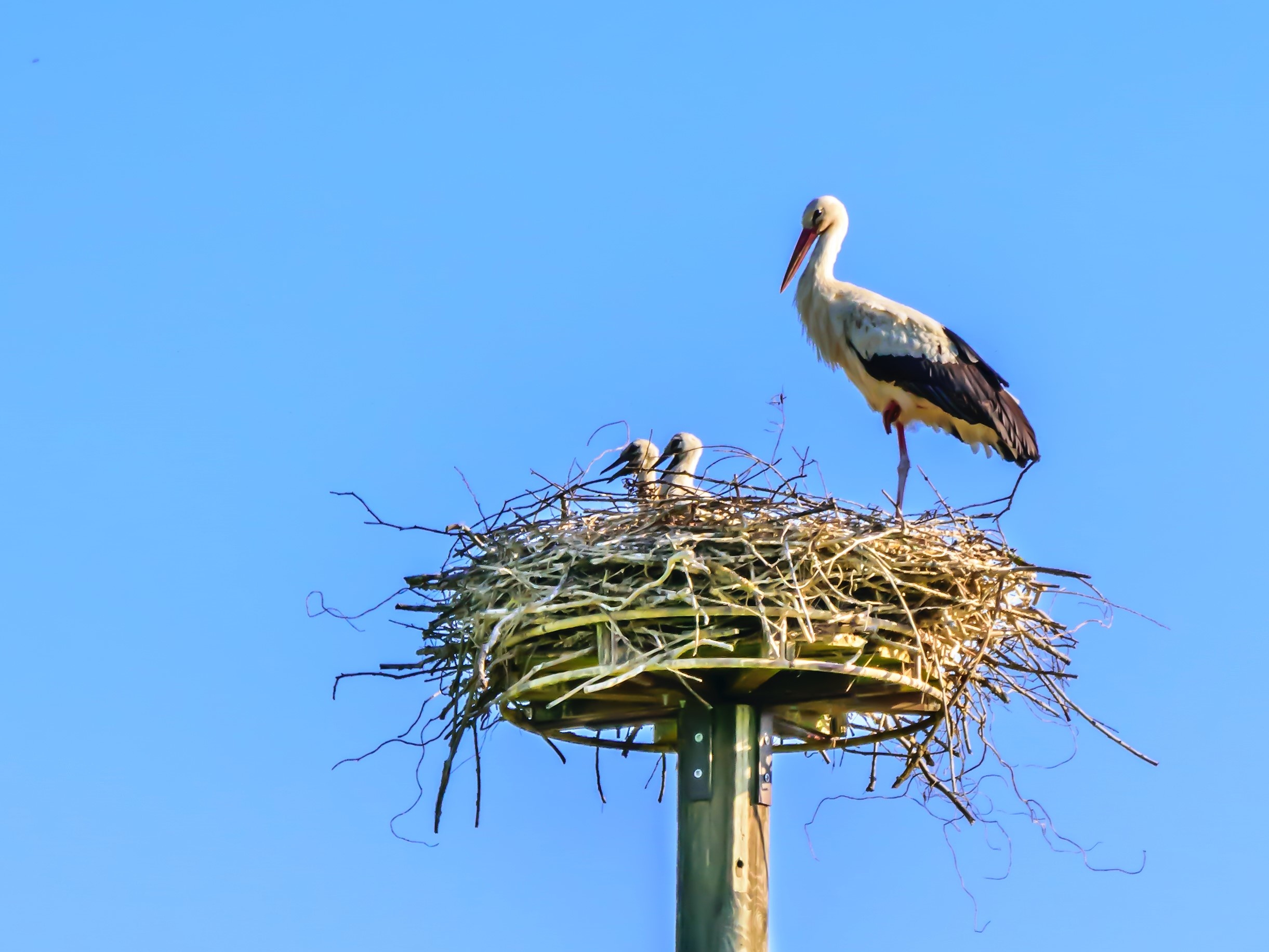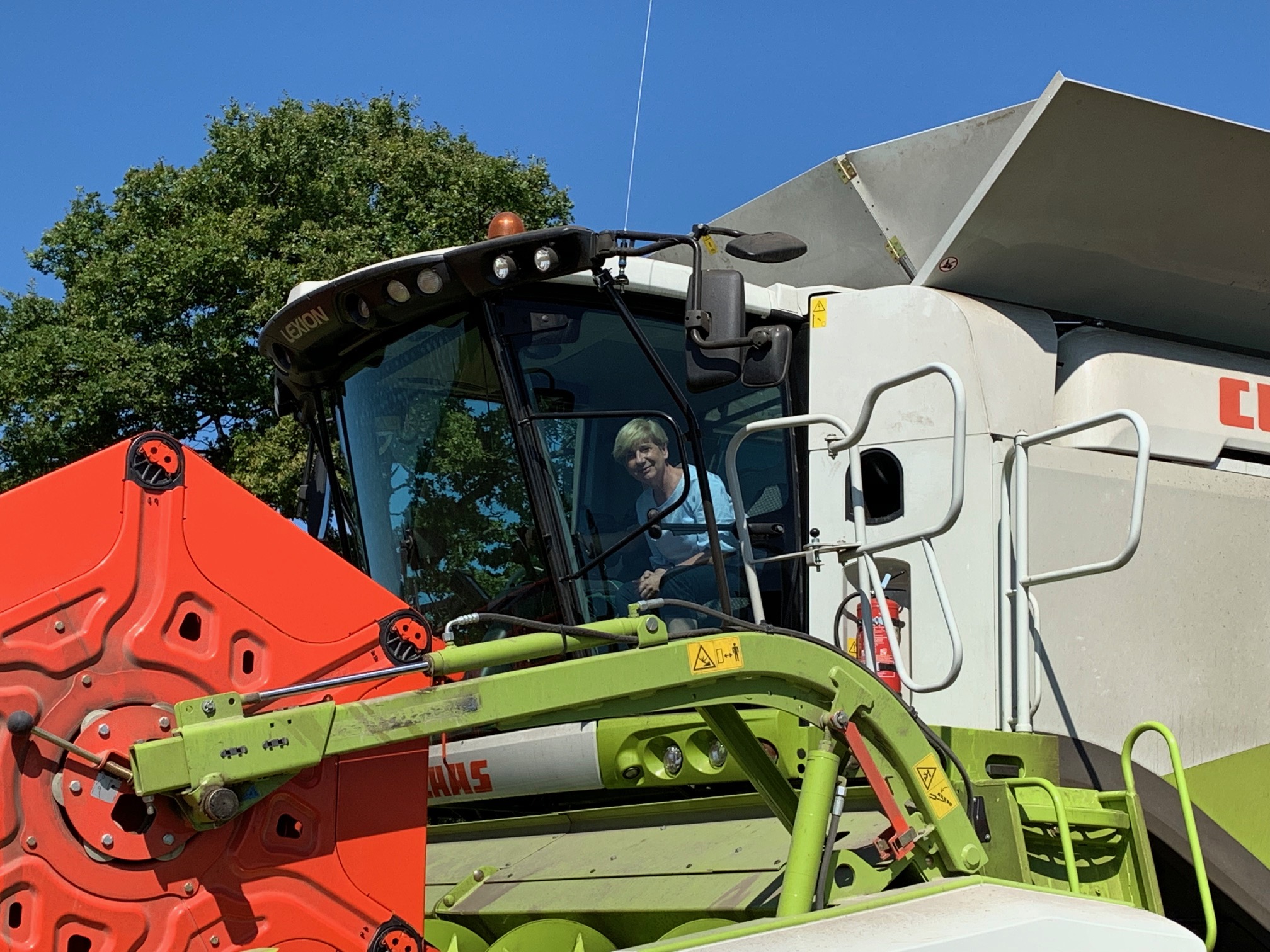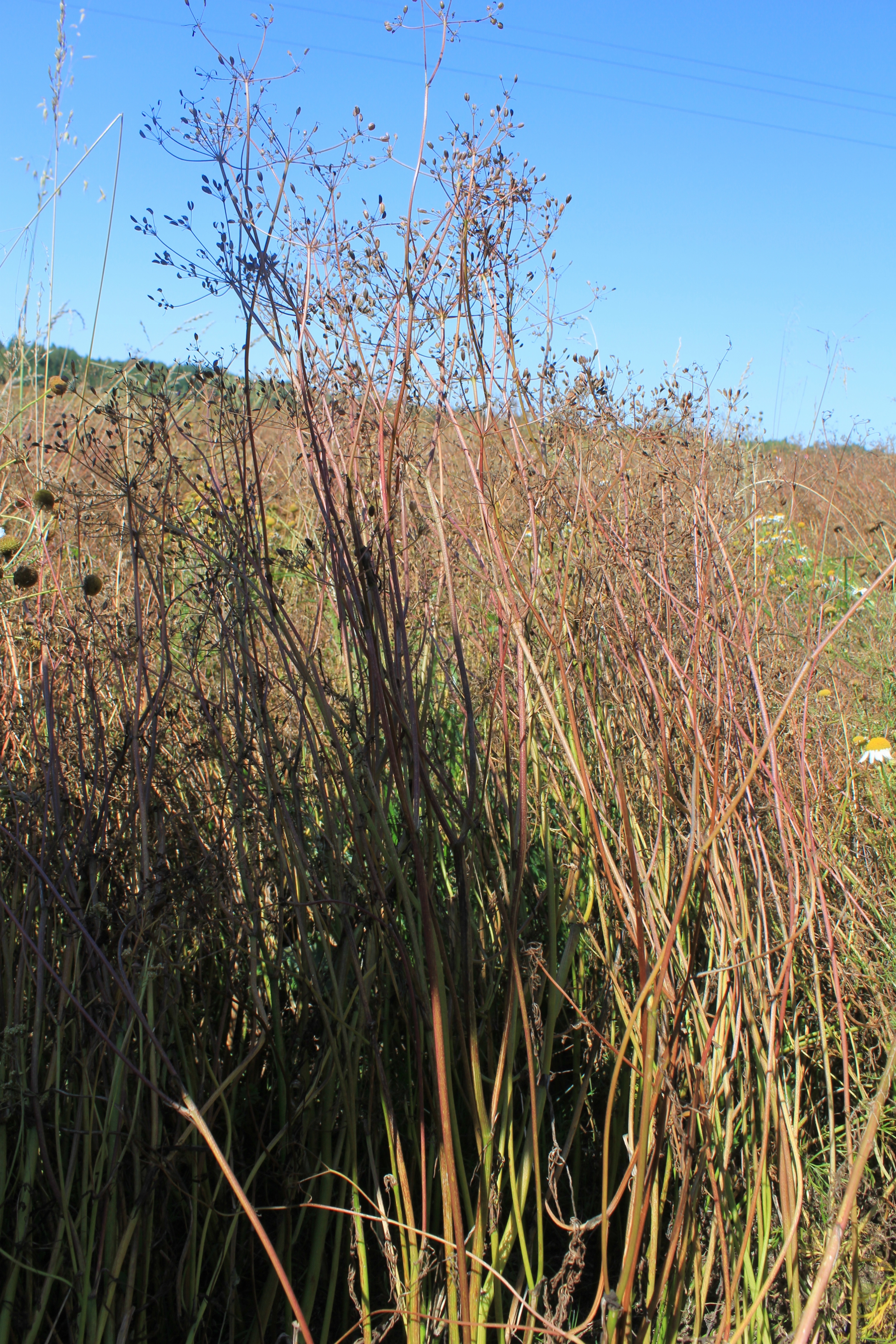photo: copula-stock.adobe.com
If you come to the villages with yellow-red brick and colorful wooden houses, you can see them from afar standing in their nests on the high chimneys or nests rods and looking out over the wide areas, proud and majestic. Sometimes they are just next to the roads, on foraging. An old peasant wisdom dares that where storks live nature is still in order and the happiness is at home. .
For the Baltic farmers, storks are both a curse and a blessing. The stork couples, who fly south in the winter, always return to the same place in spring and stay with the caraway farmers for a long time: around the nests aggressive fecal residues accumulate very quickly, which are hard to be removed. Where stork couples live, population of rabbits and frogs are dramatically down. Very active animals often trigger false alarms in secured houses and can – once the police enters – become an expensive matter.
According to our caraway supplier, the peasant wisdom’s about storks are very reliable: if a bad harvest is faced, the stork couples throw the young storks out of the nest and let them die. Their plumage turns grey, if rain is predicted, and white as snow if sun will shine: good signs to decide whether to harvest or not.
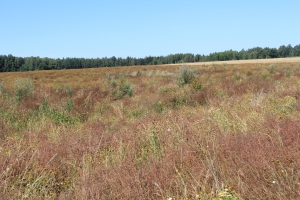
Caraway field
End of July, beginning of August it is time to harvest caraway in the Baltics. Apart from Finland, Latvia and Lithuania, caraway also grows in Poland, Hungary and Egypt. The species that grow further to the south are mostly annuals, in northern Europe biennial.
Baltic Caraway is a very robust species, which loves cold summers. During the warm summers, Baltic caraway only has 2.5 % volatile oil. During cold ones, the volatile oil can be up to 5 %!
How to plant Caraway
The plants are sown in the year before harvest. Flowering is in June, maturity in July of the following year. Harvest takes place at the end of July/beginning of August. To avoid having one year without income, farmers grow peas (one-year-plant) and caraway (two-year-plant) at the same time.
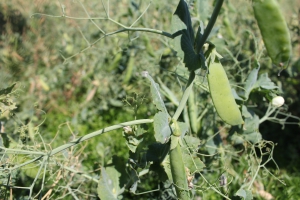
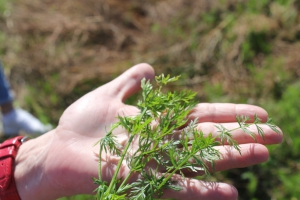
Young Caraway in first year of planting
After one-year growths farmers can harvest peas first. During the first months of growing, caraway plants have already been developed 2 cm of roots and can survive the machine-driven harvest of peas. With this method, the farmers are able to gain income every year, although they lose about 20 % caraway.
In addition to caraway, to protect the soil, farmers also plant wheat, canola and mustard as a cover crop after wheat in crop rotation. This spreads the risk, because once a crop fails, another product with a higher yield can minimize the loss.
The caraway harvest this year is expected to be rather bad by the farmers, because the plants suffered from the drought of last year and did not form right roots. As a result, only a few plants flourished.
The fields are huge. Very huge. Between 15 and 30 acreshectors. Those who believe that caraway farmers are smallholders, is wrong. Moreover, who thinks caraway harvest is done manually, has no idea how modern Baltic agriculture is equipped.
We were lucky to attend the first days of the Baltic Caraway crop.
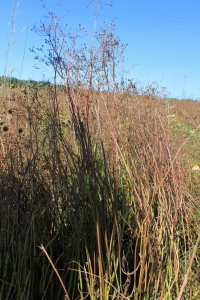
Caraway Plant before Harvest
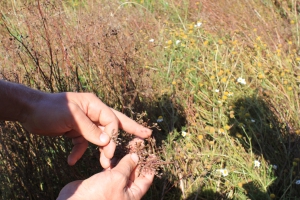
Harvesting of Caraway
On the reddish-brown fields, the caraway is cut with the whole plant as soon as it is ripe. The harvest time determines the color of the caraway: if it is still harvested half green, it remains light gray after drying, if it is harvested fully ripe, it is dark brown.
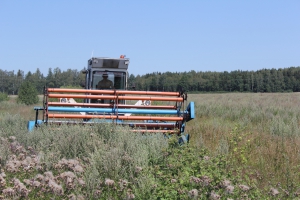
Caraway Cut
If weather is dry, the caraway gets sun-dried on the field for about one week. This is the gentlest way to dry because there is no cross-contamination and no intake via dryers. If summers are wet, drying machines are used.
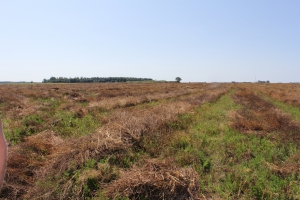
Sun-drying of Caraway
After one week, the harvester is used. It is GPS-controlled, with cutting widths of about 11 meters and an average speed of about 6 km/h. This huge machine takes the plants off the ground and threshes them while separating the caraway seed from the benches.
I was lucky, because I got the opportunity to drive one of these harvesters – what an experience! „My“ Claas was high as a truck, GPS-equipped, fully digitized and air-conditioned – no comparison to the old rumbling reapers of my childhood! That is digitalization at its best!
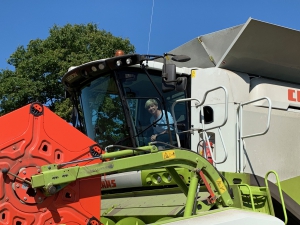
My first ride on a Caraway Harvester
Processing of Caraway
After harvest, the caraway is taken to the processor, weighed and blown into silos, where it is then passed through a triple track of trieurs from top to bottom.
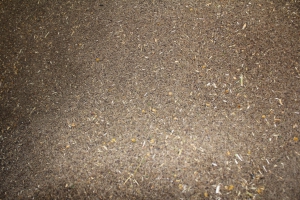
Caraway not yet recleaned
The slot trieurs put the grains, while the rest – as splits – are thrown out. Next stations are optical cleaners, special magnets and metal detectors. Afterwards, automatic sampling takes place, where samples of about 100 grams are taken every five minutes to be gathered for analyses.
The caraway gets stored, and is packed on customers’ demands after having passed a complete analysis procedure. Our supplier maintains his own laboratory.
GPS and computer-controlled support is nowadays an impressive tool of agriculture. Farmers and processors are used to handle technic. The way of planting and production is most effective. A farmer today is economist, technician and ecologist.
Despite of all those technical achievements, dependency and awe remain for nature – and only if the storks will return next year, we know that we can proceed and nature is still fine.
What do you think?
By the way: every year, our caraway processor, when storks gave birth to several small storks, bets with his employees how many children the employee will have in the same year. Guess what happens? Mostly the employees give birth to the same number of little babies as the storks!

